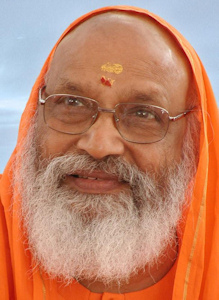Martin,
Your post made me realize that I have rarely, if ever, encountered any definition/explanation of the concept of time in Advaita. It set me off on a search of my library to try to find something. Apart from those books which index every word they contain (e.g. Krishnaswamy Iyer’s ‘Vedanta or the Science of Reality’ has 107 page-references to ‘time’), I could not find anything in any of my physical books. A search of my electronic database came up with very few references and the only scriptural one I could find is from Vivekachudamani 497:
sthulādibhāvā mayi kalpitā bhramā-dārōpitānusphuraṇena lōkaiḥ |
kāle yathā kalpakavatsarāya-ṇartvā dayō niṣkalanirvikalpe ||497||
John Grimes translates:
Sthūlādi = gross and so on; kalpita bhramāt = erroneously imagined; āropitānu-sphuraṇena = manifestation superimposed; kale = time; kalpaka = eons; vatsarāyaṇa = years and half-years; ṛtvādi = seasons and so on.
Continue reading
 Many misconceptions and misunderstandings appear to be prevailing about Yoga and samAdhi in Advaita. We shall take up in this Part of our Series, an assortment of those topics in no particular order and examine the possible correct position.
Many misconceptions and misunderstandings appear to be prevailing about Yoga and samAdhi in Advaita. We shall take up in this Part of our Series, an assortment of those topics in no particular order and examine the possible correct position. We shall present in this Part – 2 how the word samAdhi is used in Yogavasishta (Yogavasishta is available as a pdf at this site). The word samAdhi occurs very ubiquitously in this text. It is used both in its Yogic and Advaita Vedanta meaning. A few select citations are illustrated below.
We shall present in this Part – 2 how the word samAdhi is used in Yogavasishta (Yogavasishta is available as a pdf at this site). The word samAdhi occurs very ubiquitously in this text. It is used both in its Yogic and Advaita Vedanta meaning. A few select citations are illustrated below. samAdhi is a highly specialized term in Yoga and also in Vedanta. However, paradoxically, the word does not stand to convey the same ‘concept’ in a rigid and fixed manner in all its occurrences across different scriptural texts. Like all other Sanskrit words in the scriptures, the word attains a lot of fluidity and delicate malleability in the hands of the Sages and ancient authors to convey a very precise and what is otherwise inexpressible philosophical idea. Such flexibility in the use of technical words is unknown and unimaginable in the West, particularly so if one is trained in the modern science. Therefore, it is important to bear in mind that one cannot nail the meaning of the word as per one single definition when comparing its usage across different texts by different authors of different times. ‘anubhava’ and ‘anubhUti’ usually rendered into English as “experience,” often used in association with samAdhi, is another such word that needs care in handling.
samAdhi is a highly specialized term in Yoga and also in Vedanta. However, paradoxically, the word does not stand to convey the same ‘concept’ in a rigid and fixed manner in all its occurrences across different scriptural texts. Like all other Sanskrit words in the scriptures, the word attains a lot of fluidity and delicate malleability in the hands of the Sages and ancient authors to convey a very precise and what is otherwise inexpressible philosophical idea. Such flexibility in the use of technical words is unknown and unimaginable in the West, particularly so if one is trained in the modern science. Therefore, it is important to bear in mind that one cannot nail the meaning of the word as per one single definition when comparing its usage across different texts by different authors of different times. ‘anubhava’ and ‘anubhUti’ usually rendered into English as “experience,” often used in association with samAdhi, is another such word that needs care in handling.


